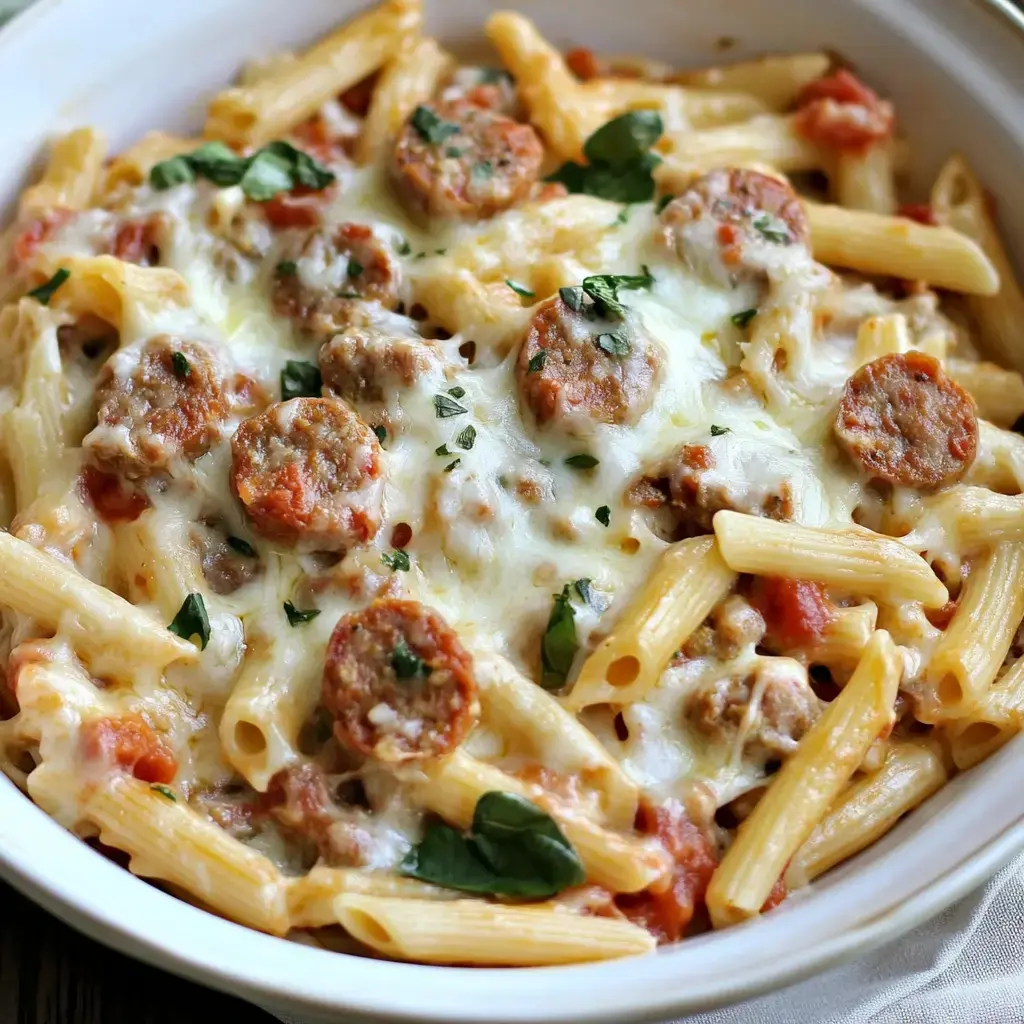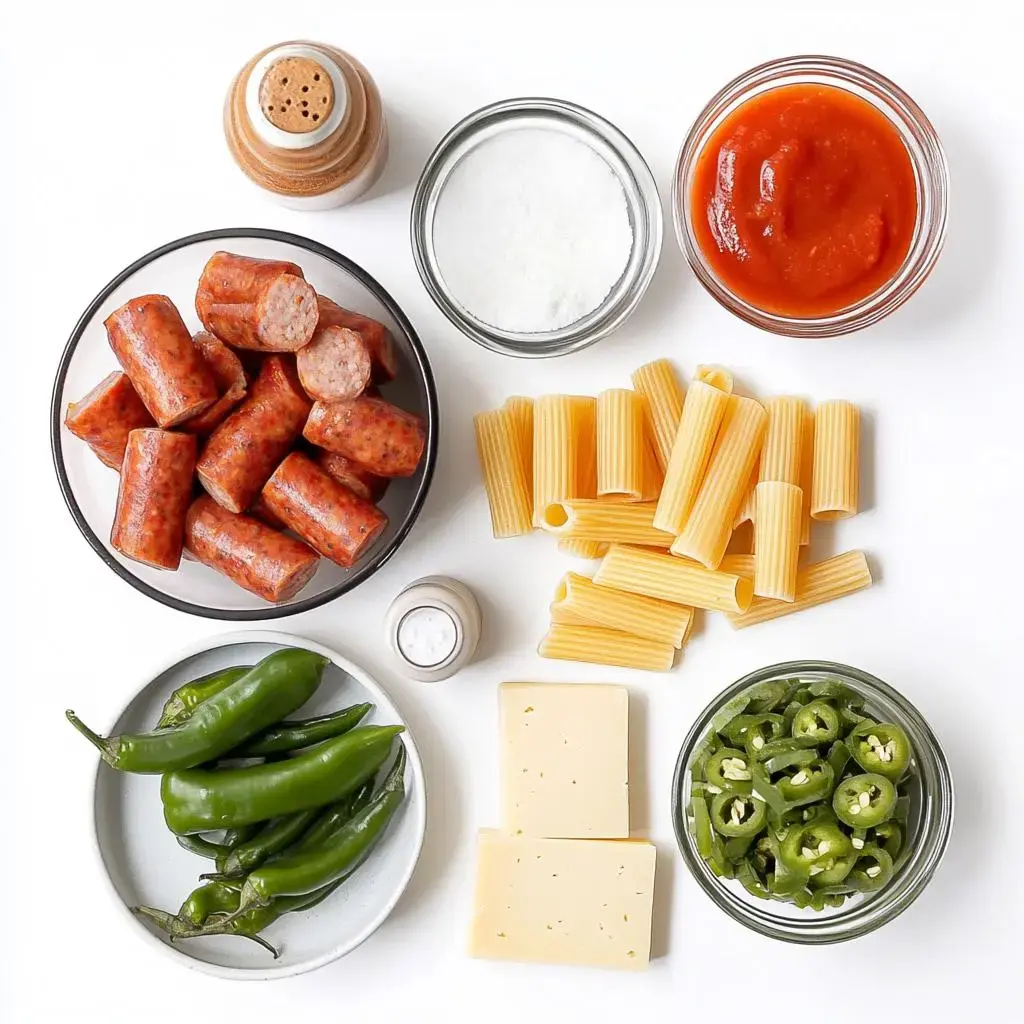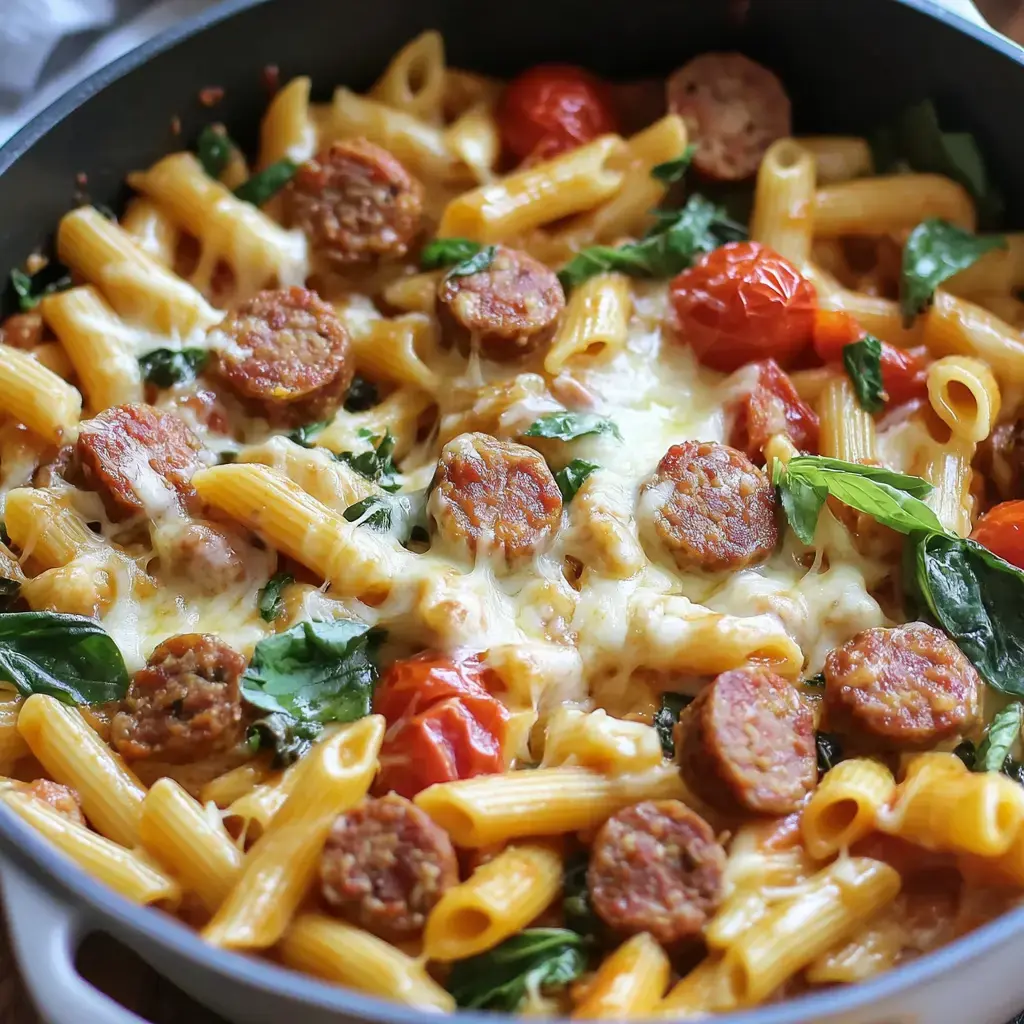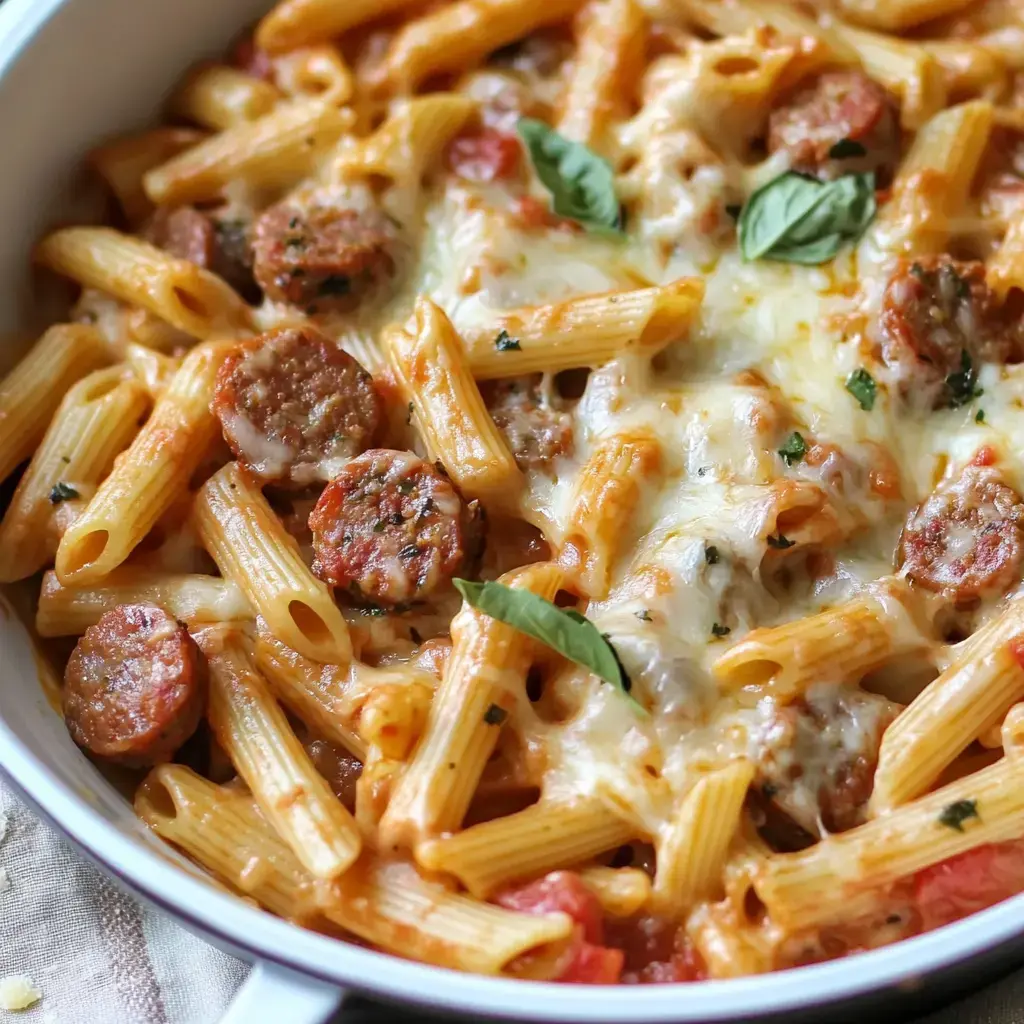 Pin it
Pin it
This refined interpretation of single-vessel pasta preparation emerged through careful development of cooking techniques and flavor integration. Initial experimentation focused on achieving optimal balance between protein cooking methods and pasta hydration, while maintaining sauce consistency. Multiple iterations refined the methodology, particularly regarding liquid ratios and ingredient incorporation. The distinctive combination of selected sausage and premium cheese creates exceptional depth while preserving proper pasta texture. Each preparation enhanced understanding of proper timing sequences and temperature control.
Why This Pasta Stands Apart
This creation achieves distinction through its precise balance of ingredients and sophisticated single-vessel technique. The careful selection of pasta shape ensures proper sauce adherence, while premium sausage provides optimal flavor development. Each component serves specific purpose in texture enhancement - from the initial protein preparation to the final sauce emulsion. Temperature control during preparation ensures proper pasta cooking while developing sauce consistency. The incorporation technique creates superior flavor integration while maintaining individual component integrity.
Essential Components
- Primary Elements:
- selected pasta variety, proper shape for sauce retention
- premium Italian sausage, removed from casing
- selected aromatics for proper flavor base
- premium stock for proper liquid ratio
- heavy cream for sauce development
- selected cheese varieties for optimal melting
- proper seasoning blend for flavor enhancement
- Equipment Requirements:
- heavy-gauge cooking vessel
- proper temperature monitoring devices
- calibrated measuring implements
- appropriate stirring tools
 Pin it
Pin it
Creation Process
- Initial Preparation
- Begin with proper protein cooking technique. Develop aromatic base with specific methodology. Monitor temperature throughout process.
- Liquid Integration
- Incorporate stock and cream with precise timing. Maintain proper temperature for pasta cooking. Execute stirring technique preventing adhesion.
- Pasta Development
- Monitor hydration levels throughout cooking process. Ensure proper sauce reduction while maintaining pasta integrity.
- Final Integration
- Incorporate cheese with specific technique ensuring proper melting. Execute final seasoning adjustments.
 Pin it
Pin it
Technical Insights
Temperature control proves essential throughout preparation process. Understanding proper liquid ratios significantly impacts final texture. Pasta selection affects sauce adherence considerably. Monitoring heat levels during cooking prevents improper reduction. Each component requires careful attention to maintain proper balance while ensuring optimal flavor development. Timing sequence creates significant impact on final presentation.
Variations and Adaptations
This foundational recipe accepts numerous sophisticated adaptations while maintaining core methodology. Various protein selections create intriguing flavor profiles. Alternative pasta shapes allow for fascinating texture variations. Different cheese combinations provide opportunities for flavor diversity. Each adaptation requires specific adjustments to maintain proper consistency and flavor integrity. Premium additions enhance complexity while complementing base flavors.
 Pin it
Pin it
Service Considerations
Professional presentation elevates this preparation to sophisticated status. Temperature consideration during service impacts texture significantly. Understanding proper portioning enhances guest experience. Strategic garnish placement maximizes visual impact. Creating balanced accompaniments maintains professional appearance while ensuring proper meal composition. Storage protocols between service periods significantly impact quality maintenance.
Frequently Asked Questions
- → Can I use different pasta shapes?
Yes, but stick to medium shapes like penne, rotini, or shells. Cooking time may vary slightly based on shape and size.
- → Why use broth instead of water?
Broth adds extra flavor as the pasta absorbs the liquid. It creates a richer taste than plain water would provide.
- → Can I use turkey sausage?
Yes, any type of Italian sausage works. Turkey or chicken sausage will make the dish lighter but still flavorful.
- → What if sauce is too thick?
Add small amounts of milk or reserved pasta water until reaching desired consistency. Add gradually to avoid making it too thin.
- → Can I add vegetables?
Spinach, cherry tomatoes, or bell peppers work great. Add firmer vegetables with the onions, tender ones near the end of cooking.
Conclusion
A delicious and easy one-pot pasta dish that combines Italian sausage, penne pasta, and a rich cheese sauce. Perfect for a quick and satisfying weeknight meal with minimal cleanup.
